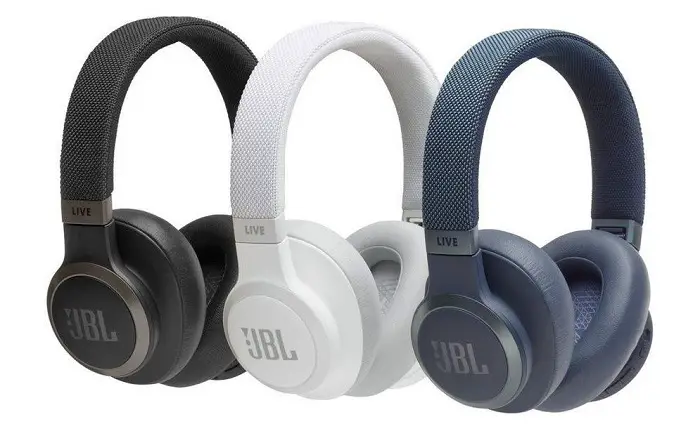The JBL headphone brand is one that’s known for its durability and sound quality. With over 10 different models, it’s hard to see a user complain that JBL doesn’t have what they’re looking for in terms of quality and functionality.
While this may be true, it’s we can’t also turn a blind eye to the lapses that have been experienced by users. There seems to be a common issue where JBL headsets consistently blink their blue light indicator, thus the device fails to play. If you are among such users, don’t worry, you’re in luck for reading this article. In subsequent writing, we will outline and discuss the causes and ways you can fix the lighting issue.

JBL Headphones Blinking Blue Light: Possible Causes
The blue light indicator of JBL headphones indicates the Bluetooth connectivity status; steady light for connection, and blinking/flashing light for connection search/pairing mode.
Sometimes, the flashing blue light is also associated with a failed pairing session – in some models, it’s a flashing red light or both. This problem is fairly easy to fix as you only need to pair the device again, or in the worst case, do a factory rest.
JBL Headphones Blinking Blue Light: How to Fix
There are several ways to resolve this issue, connecting your headphone to a device is sure to stop it, and that’s your objective.
-
Pair the JBL Headphone with a Smartphone
If your JBL headphone’s blue light is blinking, then chances are that it’s in Bluetooth/pairing mode. Right away, you want to have it connected to a smartphone or remove it from Bluetooth mode. You can follow the steps below to connect the headphone to your smartphone.
- Launch the Bluetooth settings on your smartphone and tap on the “Pair New Device” button.
- Wait for your device to identify your JBL headset and click on it.
- Next, follow the pairing wizard (depending on your mobile phone) to complete the pairing process. You should notice the light become stable or disappear entirely.
While this is the generic way to pair with Bluetooth headphones, there may be slight variations depending on the device you’re using. Also, keep in mind that the pairing mode lasts more than two minutes, so you may have to turn off the device and back on again to have it paired.
-
Reset the JBL Headphone
This is often necessary when you either fail to pair in time, or your device refuses to pair with your phone. This will mean that you’ll experience the blinking light repeatedly whenever you put the headset on until you have a reset and pair again. Resetting a JBL headphone largely depends on the model. For most models, you only need long-press the Power and Multi-function buttons simultaneously. However, some models require you long-press the Volume Up and Volume Down buttons simultaneously for about 5 seconds.
There are also some models (particularly the earbuds) where you need to remove one earbud from the case, then press and hold the back of the earbud for some seconds till you see the LED light flash blue. If any of these methods didn’t work for your model, you can always interact with their customer support to know the specific procedure for your specific device.
-
Remove/Forget the Headset from your Smartphone then Reconnect Again
In some cases, your pairing may be failing repeatedly because of an issue with your smartphone, not necessarily your JBL headphone. To resolve this, you want to go to the Bluetooth menu on your device, forget the headphone, and pair again as we’ve explained above. This is usually the solution when someone else connects with your JBL headphone and it fails to reconnect back to yours.
Differences Between Bluetooth Pairing Mechanisms
Understanding the differences between Bluetooth pairing mechanisms will give you insights into the type of pairing that your smartphone and JBL headphone does based on their specs. It’s also important if you want to easily identify why your headphone may be stuck in the pairing mode, flashing its blue light.
Mechanism |
Description |
Bluetooth Version |
| Legacy Pairing | Uses a 6-digit PIN to authenticate the devices | Bluetooth 1.0 – 4.1 |
| Secure Simple Pairing (SSP) | Uses a variety of methods to authenticate the devices, including encryption and challenge-response | Bluetooth 2.1 – 5.2 |
| Out-of-Band (OOB) pairing | Uses a physical out-of-band channel, such as an NFC tag, to exchange authentication information | Bluetooth 4.0 – 5.2 |
| Just works | Does not require any user interaction | Bluetooth 1.0 – 5.2 |
While legacy pairing is the only pairing mechanism that’s supported by all versions of Bluetooth, it’s not as secure as SSP. That being said, it’s not to say that it can’t be used in some JBL devices. Meanwhile, SSP is the default mechanism used by devices that support it. If your JBL headphone’s Bluetooth version is 2.1 or greater, then it’s probably what’s being used for your connection.
Furthermore, even though OOB pairing is becoming quite common, it’ll be a while before it can be widely populated across smartphones and JBL devices for it to become the primary pairing standard. Lastly, Just Works is the least secured paring mechanism. It doesn’t require any user interaction, and it’s often only used for devices without displays like fitness trackers.



![Discord: Bluetooth Headphones Not Working [FIXED] Discord: Bluetooth Headphones Not Working [FIXED]](https://audiojust.com/wp-content/uploads/2023/07/discord-bluetooth-headphones-not-working-211x150.jpg)
![JVC Bluetooth Headphones Not Connecting [FIXED] JVC Bluetooth Headphones Not Connecting [FIXED]](https://audiojust.com/wp-content/uploads/2023/04/jvc-bluetooth-headphones-not-connecting-211x150.jpg)



